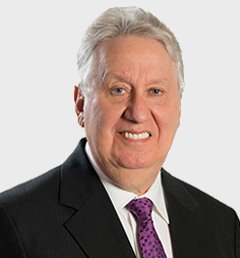The rights of terrorists? What rights?
The debate centres on whether the law sees them as another form of ordinary criminal or as a combatant, says lawyer MARVIN KURZ
The Globe and Mail, Print Edition, 25/02/06
Let’s imagine Osama bin Laden were sitting at a corner cafe, sipping a latte and reading the Internet edition of The Globe and Mail. Let’s imagine further that the U.S. government finds out. Must it try to bring him in peacefully, like the cops in Dragnet used to bring in the perp? Or does it have the right to take whatever steps required to stop him, even to the point of killing him?
That question illustrates the nub of a sizzling debate about legal responses to terrorism between two law professors at the recent Raoul Wallenberg International Human Rights Symposium, organized by Osgoode Hall Law School at York University in Toronto.
This debate strays far from the arcane discussions of legal precedent that often occur in the ivory towers of academe. It concerns a real-life issue, one with which democracies around the world must grapple. Last month, the United States unsuccessfully attempted to assassinate al-Qaeda’s second-in-command, Ayman al-Zawahri in a Pakistani mountain village. Israel, the petri dish of anti-terrorism, has successfully targeted terrorists for years, including the leaders of the recently elected Hamas. It sees targeted killings as a necessary tool in its war against terror. The deaths of the implacable Hamas founders, Sheik Ahmed Yassin and Abdel Aziz Rantisi, may have helped spur Hamas to enter candidates for the Palestinian parliament, and even to refrain from mentioning its goal to eliminate Israel, during the election campaign. This does not make a criminal group like Hamas into Wilsonian democrats. They remain a criminal terrorist group, justly banned in Canada, the United States and Europe. But Israel’s anti-terror policy has helped to lesson terror attacks from a murderous foe.
The best debates bring out the heart of an issue. Here it is whether the law sees terrorists as another form of ordinary criminal, or whether they are combatants who can be killed where they are found. New York University professor Phillip Alston has argued in favour of the proposition that terrorists must be afforded human rights in much the same manner as ordinary criminals.
He claims that the Hague Convention of 1899 and the Geneva Conventions impose this obligation. No fan of George Bush and his war on terror, Prof. Alston argues that America has faced greater crises than that posed by Osama bin Laden and his Islamofascist colleagues. Prof. Alston points to the fact that the Americans withstood Nazism, Communism and the threat of an atomic arms race without imposing the Patriot Act. Because Muslim fundamentalism does not pose an existential threat to the West, Prof. Alston believes international law should change to apply human rights concepts to the new form of combat invented by modern terrorists. That is where we have to allow the law to evolve to protect the rights of terror suspects. They should not be subject to indefinite detention if we cannot prove that they are criminals, and they most certainly should not be targeted, for “extrajudicial killing.”
On the other hand, Israeli professor Yoram Dinstein, of Tel Aviv University, has little time for what he sees as ivory tower hokum. He argues that blanket defenders of the civil liberties of terrorists do not live in the real world. It is a place where terrorists such as Hamas can declare bloody war on Israel, and al-Qaeda can do the same to the West. Those defending their rights fail to recognize the difference between the laws of war and ordinary criminal law. In fact, to use Prof. Dinstein’s colourful metaphor, they represent the librettos of two different operas. La Traviata and La Bohme are both sublime, but you can’t sing an aria from one during a scene from the other.
Although the terrain of the battlefield may have changed, the rules have not. War is nothing but legalized “extrajudicial killing.” A soldier does not require a court order to kill his enemy on the battlefield. Terrorists have chosen a battlefield that has no bounds, and those fighting against them should be similarly free of restraint. True, the Hague and Geneva Conventions speak about the humane treatment of soldiers. But those treaties explicitly apply to uniformed soldiers, not assassins who blend into a crowd. Those who openly and fairly assume the uniform of war are entitled to the protections of its humanitarian law. Terrorists, who try to gain advantage by blending in with a crowd they seek to murder are beyond the pale of the law. They forfeit the rights of a uniformed soldier, and may be killed where they stand
After the debate finished, I bumped into a woman, whom I had never met. I asked her what she thought of the discussion. She surprised me by saying that these fine points of law mean little to her. It turned out that she was not a lawyer at all, but had been invited anyway. On Sept. 11, 2001, her husband was at a conference, just like ours, in New York. His conference, however, was at the World Trade Center, and was scheduled to begin just about the time American Airlines Flight 11 slammed into the north tower. Much of her life was destroyed that day. One can excuse her for her lack of concern for the rights of terrorists. As she plaintively asked the participants, what about the rights of the victims of terror?
Indeed, if we think we can blur the line between terrorist and criminal, or even between terrorist and politician, we may be asked that question more and more frequently.
Marvin Kurz is honorary legal counsel of the League for Human Rights of B’nai Brith Canada. The views expressed are his own.
Judges tackling national-security learning curve As invasive laws test individual freedoms, Federal Court seeks outside expertise
COLIN FREEZE
Please Note: The address by the Honourable Simon Noel of the Federal Court of Canada, which is referred to in this article, was delivered at Osgoode Hall Law School’s Raoul Wallenberg International Human Rights Symposium on January 19, 2006 in New York City.
Magistrates from the Federal Court of Canada are quietly taking timeouts from the bench to attend informal seminars, where they are tutored about security and terrorism issues. Almost half of the court’s 40 judges, who are often called upon to evaluate national security threats and the need for spying, have taken breaks to get together and ask questions, over sandwiches, of everyone from American experts in wiretap laws to Canadian civil libertarians.
These judges say that as it gets harder to reconcile invasive laws with individual freedoms, they’re doing a lot more extracurricular consulting, meeting with at least five experts in the past year. “We’re trying to improve our ability to test the government’s case as time goes by,” Mr. Justice Simon Noel of Ottawa explained during a speech last month at a human-rights conference in New York.
“It’s absolutely clear that judges cannot become intelligence officers. . . . We have no intention of trying to become such officers,” he said. “But that doesn’t mean that we can’t become quite well-informed.” Judge Noel said he and his colleagues would be doing a “grave disservice” to Canada if they failed to become more intelligent about intelligence, given the complex issues they ponder. The Federal Court often scrutinizes secret spy information. Crown attorneys frequently come to the court with classified documents, attempting to show the judges the urgent need for wiretaps, or, in rare cases, to jail non-citizens as suspected terrorism threats.
Frequently, defence lawyers are barred from such hearings, wherein government motions almost always succeed. Human-rights groups have been sharply critical of secrecy that can surround such procedures. The judges acknowledge that these processes are difficult.Judge Noel insisted in his speech that he and his colleagues do “the very best we can” to challenge government evidence that’s presented in camera, adding “the court cannot simply throw up its hands and rubber-stamp the government’s position.” He said it’s vital that judges pose hard, knowledgeable questions and, to this end, they have been learning through their meetings with various experts.
Several American officials have been consulted over the past year, including a high-level government lawyer, James A. Baker, and a top judge, Colleen Kollar-Kotelly, both of whom work to uphold U.S. laws meant to rein in domestic spying. (The same officials have lately made headlines for opposing U.S. President George W. Bush’s controversial program of having U.S. spies eavesdrop on conversations without first obtaining warrants.)
The Canadian judges have also met a former Central Intelligence Agency inspector-general, who recalls his hour-long meeting warmly. “We had a good discussion,” said Fredrick Hitz, whose job as a watchdog had him keeping tabs on the CIA in the 1990s.In an interview, Mr. Hitz said he enjoyed travelling to Ottawa last summer to meet a dozen judges. “They were very polite. They didn’t ask a lot of questions.” Still, he said the stepped-up security measures that followed the 2001 terrorist attacks in the United States were very much on the judges’ minds. Some wondered whether the threat of terrorism should prompt them to be any more accepting of government arguments.
“The underlying question was, ‘Do we sublimate our underlying judge-like instincts?’ ” Mr. Hitz said. “My answer was, ‘No — increase them!’ ”
In a telephone interview, Mr. Hitz says he feels there have been many regrettable excesses in the war on terrorism led by the United States. “If nothing else, Canada can learn from our mistakes, which seem to be plenty,” he said. The judges are also consulting Canadian experts, including members of the Canadian Civil Liberties Association, which has long denounced government secrecy and certain anti-terrorism laws. They heard another perspective a few weeks ago, when they met with Martin Rudner, a professor who heads a research centre at Carleton University devoted to intelligence and security studies.
The subject was “what is al-Qaeda and how has it evolved,” Prof. Rudner said in an interview. “The idea was to give them the kind of background that I think they need.” The professor said Judge Noel approached him to arrange the seminar. While the judges wore casual clothing and munched sandwiches, he said, they were focused on their interest in terrorism issues.
“We had a very good philosophical discussion,” said Prof. Rudner, who emphasized that fighting terrorists demands different approaches than fighting criminals. “I feel one should commend the Federal Court, because in order to do justice, it needs to have a lot of knowledge.”












